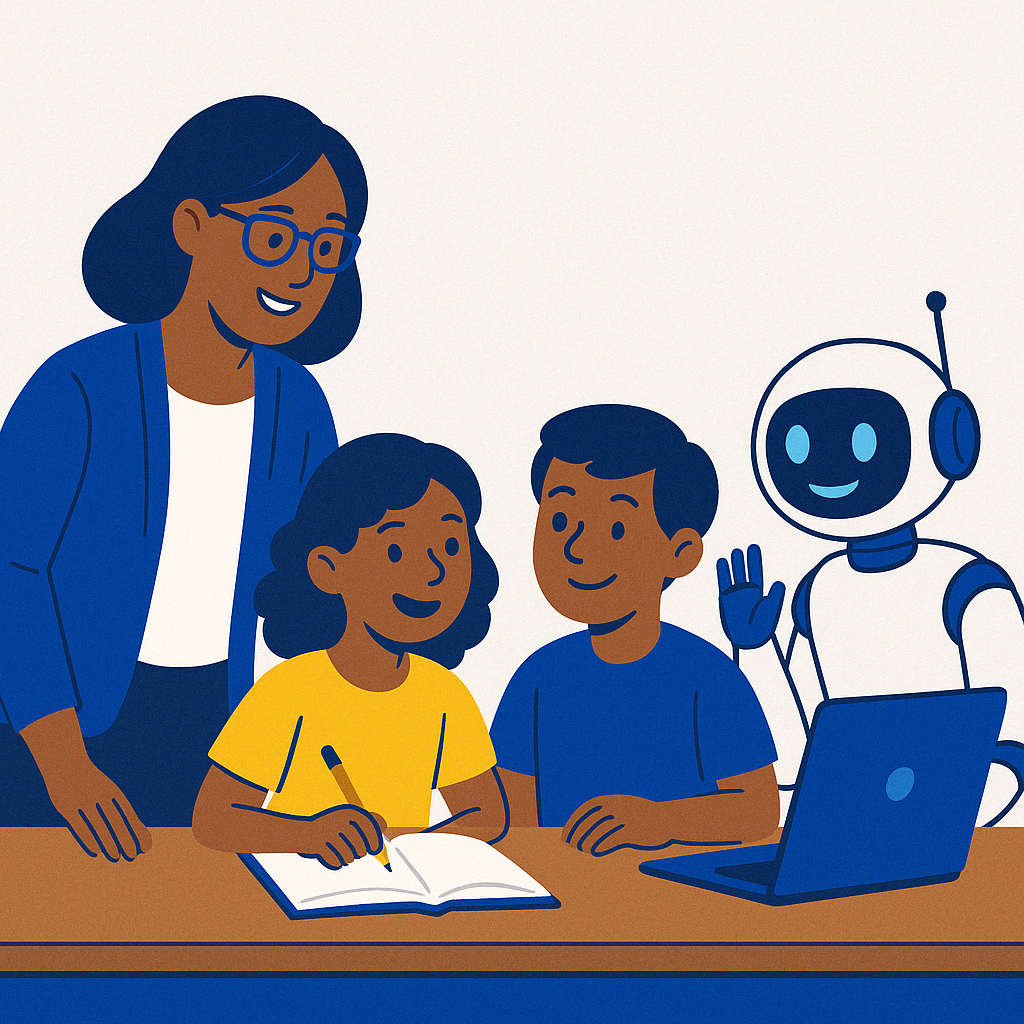Why Human Connection Still Matters in Teaching and Tutoring
Artificial Intelligence (AI) is making its way into classrooms across the country, transforming the way students learn and teachers teach. From adaptive learning platforms to instant grading tools, it’s easy to see why AI has gained momentum in education. But as helpful as it can be, there’s an important question we need to ask: can AI replace the human side of teaching?
Spoiler alert: not even close.
The Pros of AI in Teaching
Let’s start with the good stuff. AI can be incredibly useful for both students and educators. It can personalize learning, offering custom content based on a student’s pace and performance. Tools like Khan Academy’s AI tutor or ChatGPT can provide extra practice, real-time explanations, and even 24/7 homework help. According to Forbes, AI in education can also reduce administrative tasks, freeing up time for teachers to focus more on instruction and student interaction.
Then there’s the data. AI can track learning gaps and pinpoint where a student is struggling, giving teachers insights they might otherwise miss. This is especially helpful for large classrooms or remote learning environments.
In short, AI can enhance how we teach—but it’s not the whole picture.
The Cons: What AI Can’t Do
As powerful as AI is, it lacks one very important thing: a heart.
It can’t form relationships. It doesn’t understand body language or know when a student is having a rough day. It can’t create a classroom culture where kids feel seen, supported, and safe. As Wired puts it, teaching is more than delivering information—it’s about human connection.
There’s also concern around over-reliance. When students turn to AI for every question or problem, they miss out on developing critical thinking and problem-solving skills. As The Financial Times reports, some educators worry that AI might be more of a shortcut than a support system.
Why Live Teaching Still Matters
Live instruction—whether in a classroom or through one-on-one tutoring—plays an irreplaceable role in a child’s development. According to the American Psychological Association, students who feel a strong connection will attain higher levels of achievement than those students with more conflict in their relationships.
And it’s not just about academics. Students need to feel like they belong. A recent report from the Institute of Education Sciences emphasized how a sense of belonging impacts not only school performance but also long-term mental health.
Teachers and tutors foster that sense of belonging every day through encouragement, check-ins, shared laughter, and yes—even those impromptu side conversations that AI can’t replicate.
Tutoring as Relationship-Building
High-dosage tutoring—especially when done in person—takes the human connection one step further. It gives students consistent one-on-one or small-group support with an adult they can trust. According to The 74 Million, tutors who build strong relationships with students become academic mentors, not just academic helpers.
That trust translates into better outcomes. Students are more likely to show up, try harder, and believe in their ability to grow. And when tutors and teachers work together, students get even more out of the experience.
So, Where Des SmartStart Come In?
At SmartStart Education, we believe that AI should support—not replace—human teaching. Our tutors and educators combine the best of both worlds: they use tech when it helps, but lead with heart, connection, and expertise.
We offer in-person tutoring programs that emphasize relationship-building and academic confidence, and K–12 staffing solutions that bring experienced educators into classrooms where they’re needed most. Whether your school needs help with math interventions, reading support, or short- and long-term substitute staffing, we’re here to partner with you—human to human.
Because at the end of the day, what students remember most isn’t just the lessons—they remember who believed in them.
Sources:
-
1. Forbes. AI in the Classroom: Pros, Cons, and the Role of EdTech Companies.
2. Wired. AI Can’t Replace Teaching, but It Can Make It Better.
3. Financial Times. AI breakthrough ChatGPT raises alarm over student cheating.
4. American Psychological Association. Improving Students’ Relationships with Teachers to Provide Essential Supports for Learning.
5. Institute of Education Sciences. The Importance of Student Sense of Belonging.
6. The 74 Million. Beyond Lessons: Tutors Can Help Teachers Build Relationships with Students.

